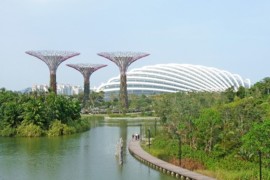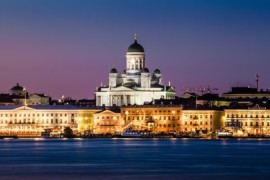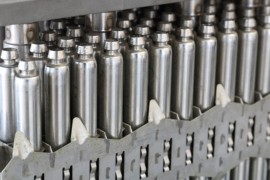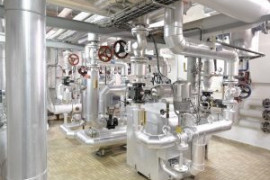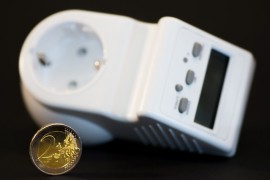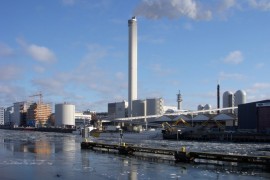A trigeneration network is designed to simultaneously produce heating, cooling and electricity in the same place and send it to the user. But how does it work? What are the advantages of this solution? Are there disadvantages? DHC News tells you everything you need to know about this innovation that will probably be at the heart of the heating networks of tomorrow.
What is trigeneration?
Trigeneration is an extension of the cogeneration principle, which is designed to produce electricity and heat from a single energy source, at the same time and on the same installation. Trigeneration adds a third source, that of cooling. In this process, the heat generated by the cogeneration is used to generate chilled water, which can then supply an air conditioning system.
This feature is supplied by an absorption chiller. Its operation, though very technical, has already been tested in some countries, such as Japan, for many years. Put simply, an absorption chiller recovers heat from cogeneration to produce chilled water. The principle is to compress two different substances (often water and lithium bromide) by heating, which when they expand absorb ambient calories and produce cooling.
We see that through this technology, the principle of trigeneration allows for the recovery of waste heat and is a very serious future path for heating networks. The production of continuous power (electricity) combined with two forms of “seasonal” energy (heating in winter, cooling in summer), should be of interest to many buildings, such as:
– Residential buildings and condominiums;
– Hospitals and nursing homes;
– Office buildings;
– Certain industries;
– hotels…
The advantages of trigeneration
Like cogeneration, trigeneration appears as a promising solution to improve energy efficiency across the planet.
CO2 footprint reduction – Devices for combined heat, cooling and gas indeed contribute to reducing CO2 emissions.
No associated pollutants – They do not require also any harmful chemical pollutant because it is water that serves as coolant.
Primary Energy savings generated by this solution – Compared to separate production, the economy varies, depending on the case, 10 to 44%. Such a plant is therefore profitable for five years. And this especially when combined with the use of a non-fossil fuel, such as biogas, wood or vegetable oils.
Recycling of waste heat – trigeneration is a technical alternative to thermal storage which can be very difficult to implement in some urban contexts.
Finally, trigeneration reduces energy bills for consumers by acting on the final price per kWh. It provides a holistic view of energy and to meet seasonal requirements corresponding to many types of buildings, public and private.
Arguments instead in line with good practice developed to achieve the goals of the bill on the energy transition to green growth.
The disadvantages of trigeneration
Applied to heating systems, trigeneration is still in its infancy. That is why the solution still presents some limitations. These include:
– The heavy weight of the absorption chiller;
– Energy efficiency still slightly lower than that of a cogeneration;
– Immediate profitability less than for cogeneration, explained by greater investment (135 000 € for an absorption group of 200 kWfroid);
– Finally, as in the case of cogeneration, trigeneration generates energy that can not be easily transported over long distances too, because of the risk of loss.
Some examples of trigeneration in Europe
If France, trigeneration heat networks are not yet back in morals, we can not say that the solution is so much more prevalent in the rest of Europe. This technology is definitely in its infancy. Some interesting examples still exist on the Old Continent, in a more industrial optics in the South and “broader” in the North:
– In Spain, the L’Oréal group has installed a biomass plant of 3800 m2 combined with the installation of photovoltaic panels and a trigeneration system at its plant in Burgos. The objective of this implementation, which produces both electricity, hot water, cold water and steam? Allow the site to reach, by the end of 2015, carbon neutral.
– In Italy, it is in a historic factory of manufacturer of Garofalo pasta, near Naples, the Ab Energy Group has installed a trigeneration plant.
– In Helsinki (Finland), heat and cold networks, managed by Helsingin Energia, provide heating 400 000 people, about 600 000 inhabitants living in the Finnish capital.
Trigeneration represents a good track for further heating networks. This solution not only increases energy efficiency, but also reduce the bill for consumers. Note that a plant of this type has just been inaugurated in Montpellier: we’ll talk soon! Not to forget anything News trigeneration and district heating networks, subscribe to our newsletter.


